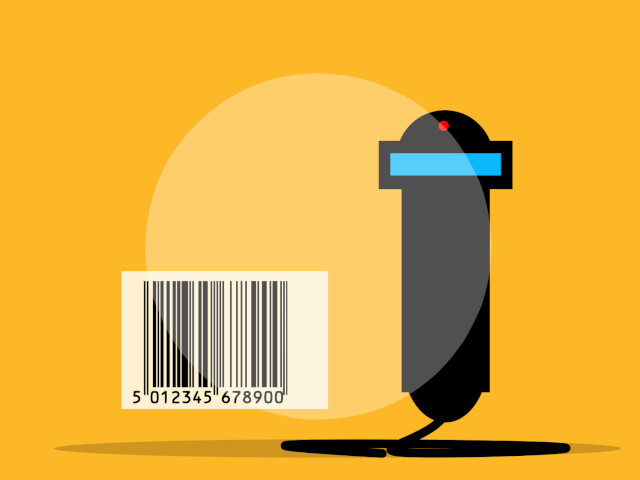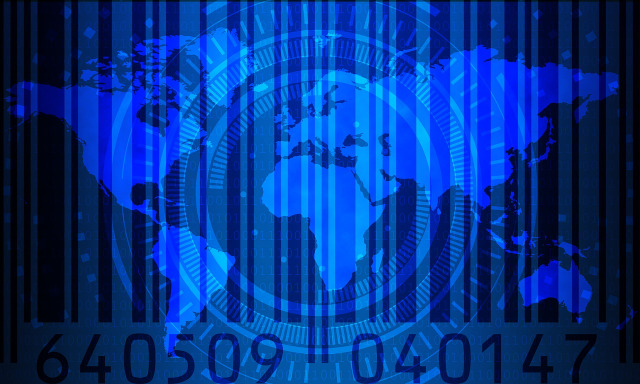In the fight against COVID-19, barcodes guide the way
By Staff Writer 20 December 2021 | Categories: sponsored content
Looking back at how the COVID-19 pandemic unfolded over the last two years, there have been many ups and downs, and with over 270 million cases worldwide there very few signs of this pandemic slowing down (in fact, speeding up in many parts of the world).
All over the world, governments and scientists have implemented many systems and technologies to try to mitigate the spread and impact of the virus, such as contact tracing apps, rapid testing kits, and vaccines. Helping keep track of all these implementations, the backbone of the systems are barcodes - unique, encoded sequences of numbers and characters that are ideal for tracking and tracing.
Barcode recap
Barcodes were originally invented for use in the retail environment, traditionally appearing as white and black vertical stripes of varying widths and can be found on every product in retail shops. We often forget about their existence, yet they play a crucial part in many areas of our lives, bringing about efficiency that we just can’t live without in the modern economy.
In the fight against COVID-19, barcodes were first used in contact tracing in many parts of the world. Instead of the traditional one-dimensional codes, more complex two-dimensional codes (that allow more information to be encoded) are used. These days we are fairly familiar with two-dimensional barcodes, the most popular being Quick Response (QR) codes that can be scanned by most modern smartphones.
Contact tracing
Somewhat controversial in its implementation in many parts of the world, contact tracing systems required people to scan a QR code which would register them as having been at a location. In this way, if someone was to test positive at that location, everyone who scanned the QR code on the same day or within a specific time frame would be notified.
In South Africa, a different kind of contract tracing app was implemented that makes use of Bluetooth-enabled smartphones to detect proximity to other smartphones. Individuals would be notified if any smartphone they’ve been in close proximity with confirms a COVID-positive status. With this implementation, no personal data would be recorded, ensuring privacy and anonymity, but requires individuals to take the initiative to update their COVID status in the app.
Vaccine distribution and vaccination status
Barcodes are also used in the rollout of vaccines. In the distribution of vaccines, traditional one-dimensional barcodes are used to track and trace batches of vaccines to ensure that the correct batch arrives at the correct vaccination centre. Each batch can also be traced to where it was manufactured using uniquely encoded barcodes. Because of the unique nature of barcodes, it ensures that counterfeit vaccines do not make it into the distribution network and real vaccines do not leave the distribution network, be it through theft or misplacement.
Once you are fully vaccinated, you can apply for a vaccination certificate online whereby a unique QR code will be assigned to you to certify your vaccination status. These QR codes are encoded such that they are linked to the individual and are therefore all but impossible to fake.
Barcodes in business
Any individual or business looking to get into the retail sector will eventually have to implement barcodes into their processes, whether it is to use QR codes to redirect users to your website of choice or in implementing payment applications such as Snapscan or Zapper, or whether you simply require traditional one-dimensional barcodes for products that you wish to offer. Due to the efficiency that barcodes bring to the retail environment, barcoded products are required by all major retailers in South Africa, with specifications on how they should be incorporated into your product labelling.
Barcoding company SA Barcodes has supplied local businesses with retail barcodes and QR codes for more than a decade, and offer a design service to ensure your barcodes meet all the requirements the first time round. Visit their website to find out more about the barcoding process: www.sabarcodes.co.za.

Most Read Articles

Have Your Say
What new tech or developments are you most anticipating this year?



